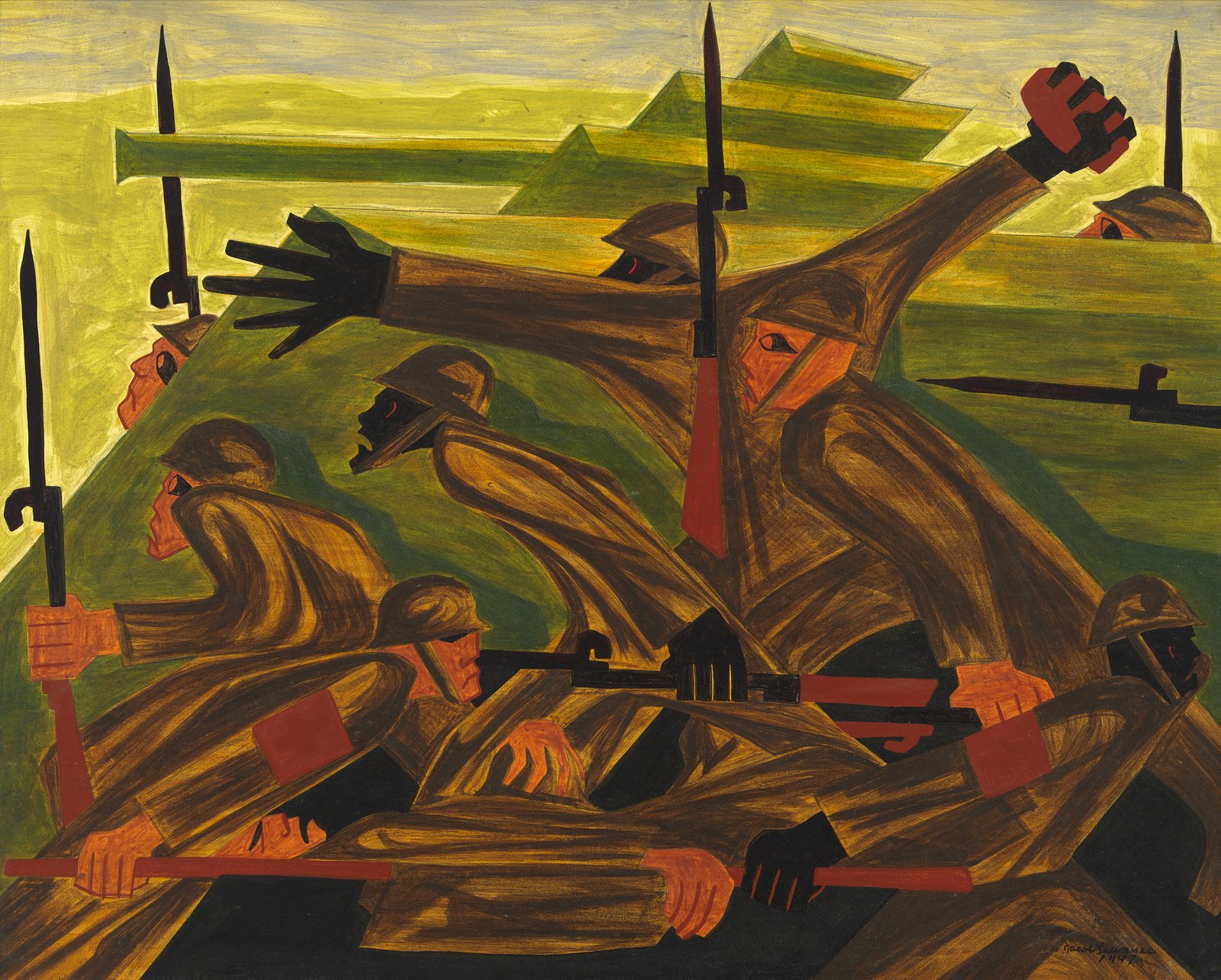Art as Armor: How African American Creativity Disarmed War
Jacob Lawrence. War Series: Beachhead (1947)
In the aftermath of World War II, Jacob Lawrence painted his War Series—not as propaganda, but as a silent scream. His fractured, haunting figures revealed to Black soldiers the psychic cost of battle—something the newspapers wouldn’t show. These paintings weren’t a rallying cry. They were a reckoning.
At the Northeast Louisiana Delta African-American Heritage Museum, we honor artists whose work doesn’t just document history—it helps change it. We are especially interested in how African American creativity has disarmed some of the world’s conflicts, one brushstroke, one song, and one story at a time.
When Canvas Became a Weapon
Art has always carried truth into places power tried to silence. Picasso had Guernica. Jacob Lawrence had Harlem, the South, and a battlefield full of Black Americans asked to fight for a country that barely saw them as citizens. His War Series exposes the internal chaos that soldiers carried long after they left the front lines.
Gordon Parks. African American and White Soldiers Aboard A Ship, (1941).
And then there were the photographers—like Gordon Parks, whose unblinking lens showed Black GIs returning from World War II to segregated buses, schools, and diners. Parks forced the public to feel the numbers—to see the faces behind the casualties, and the contradictions inside America’s moral mission.
But the Battle Wasn’t Just Fought on Canvas
Billie Holiday’s Strange Fruit was more than a song. It was a siren. Marvin Gaye’s What’s Going On questioned Vietnam and America’s soul. These were public sermons. Black music became protest. Then pressure. Then change.
Spoken word artists, jazz musicians, and soul singers created emotional access points that headlines couldn’t. They made it personal—not just reflecting the public mood, but shaping it.
The Museum’s Role in Telling This Story
At the museum, we trace the throughlines—from studio to street, from art to action. Whether it's Lawrence’s painted trauma or Nina Simone's explosive performances, Black artists have long confronted conflict with sound, color, and composition, demanding a moral response.
Why It Matters Now
Today, as images of conflict flood our screens, African American artists continue this legacy—just as Lawrence and Parks once did. Their work doesn’t offer easy answers. It forces us to confront hard truths.
A 1967 Harris poll revealed that 60% of Black Americans opposed the Vietnam War—a shift driven not just by political debate, but by art, music, and media that gave voice to doubt.
Rediscover the role of creativity in times of conflict—and how African American artists can help bring peace, not with weapons, but with vision. Plan your visit today.



